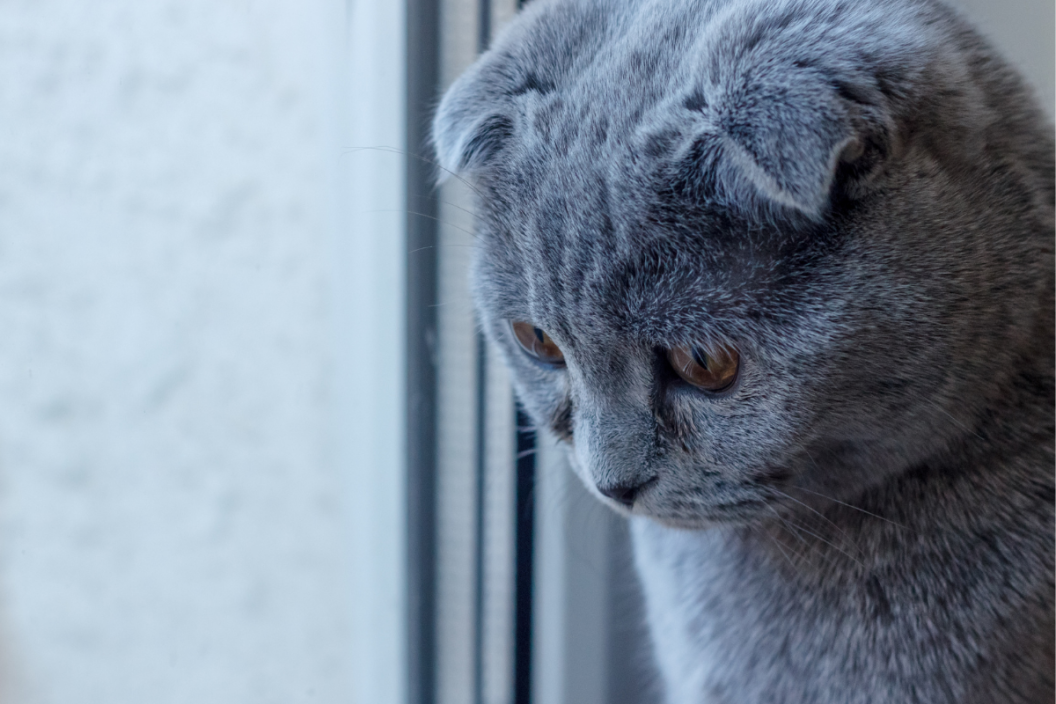Is your kitty not eating her tuna? Has frequent diarrhea? She could have eaten a bad mouse, or these symptoms could be more severe distemper.
Feline distemper, also known as feline panleukopenia or FPV, is a dangerous disease for which there is no cure. The life-threatening disease can affect cats of all ages and is highly contagious. So what exactly is the viral disease, and how can you protect against distemper in cats?
Feline Panleukopenia Virus
#CatCare There is no #treatment for #FelinePanleukopenia or #FelineDistemper, so it should be prevented before its occurrence through #vaccination. The primary #vaccine should be given by 9 to 12 weeks of age, followed by #BoosterDose 4 to 6 weeks later #CatLover #TailsLife pic.twitter.com/BCAywqyTa1
— TailsLife (@TailsLife) April 27, 2018
The distemper virus is caused by a strain of the feline parvovirus and can affect adult cats and young kittens. Of course, those who have weaker immune systems are also highly likely to contract the virus.
Distemper in cats spreads if a cat or a human is exposed to an infected cat's saliva, urine, blood, nasal discharge, or feces. According to Pet Health Network, there is no cure for the virus, but there are options for supportive care once your cat is infected. If your cat survives the disease, it will retain antibodies and be immune from any secondary infections.
It can be easily transferred to unvaccinated cats through bodily fluids and contaminated surfaces. In fact, according to the Delmar Pet Hospital, the virus lives on surfaces it comes into contact with for up to a year. It is resistant to most disinfectants, so if you need to clean a surface or a litter box, use bleach.
The parvovirus goes after your cat's blood cells in their bone marrow and intestinal tract. Pregnant cats are highly susceptible to the disease and can transfer FPV to their unborn babies in utero. These kittens will suffer damage to their cerebellum, which will affect how they walk and how they hold their tails once they are born.
Signs Of FPV Infection
If your kitten is too young to be vaccinated or your older cat is not up to date, these are the signs of distemper in cats that you need to look out for:
- Dehydration
- Diarrhea
- Elevated temperature
- Loss of appetite
- Vomiting
- Depression
- Rough fur
- Anemia
Other signs of illness are decreased coordination, hiding, placing their chins on the ground excessively, and pulling their feet underneath their bodies. If you see multiple symptoms of feline distemper in your cat, you should schedule an appointment with your veterinarian to get an official diagnosis and begin treatment.
Diagnosing Distemper in Cats & Treatment
https://twitter.com/PurrrfectlyH/status/1133895052344864771
RELATED: Probiotics for Cats: Why Cats Benefit From Them
The symptoms of distemper in cats can present themselves as many other types of illnesses. It can be hard to tell if your cat has FPV or something else entirely. They could have a food allergy or have come into contact with a poison.
If you know your new kitten has come in direct contact with another cat with FPV, you have a better way to gauge your next steps. However, many pet owners do not know that the cat has distemper.
A couple of different tests can be administered by your DVM. Some of the tests include:
- Blood Tests
- Physical exam
- Urine tests
- Biochemical profiling
Your veterinarian will also need your cat's health history and a thorough rundown of its symptoms to accurately diagnose the disease and treat it appropriately. You will also likely need to produce samples of their bodily fluids for the vet to test.
Your vet will check your cat's white blood cell count, take x-rays of their stomach and chest, and check for other possible infections.
A feline leukemia virus test will likely be administered as well as a feline immunodeficiency virus test.
Once your vet accurately diagnoses distemper in your cat, they will recommend treatment. Like canine distemper, there is only management, no solution. One of the most hazardous symptoms is dehydration and can quickly lead to your cat's death. The vet will test how dehydrated your cat is to see what the first step will be.
Your vet will likely start your cat on intravenous fluid therapy to rehydrate them and add electrolytes to balance out their system. Your cat may also need to be prescribed antibiotics to assist in fighting any possible bacterial infection. In addition, cats with distemper are likely to develop respiratory infections, which antibiotics can treat.
The treatment will be unique to your cat and its needs. Still, it may include hospitalization for severe symptoms, medication for vomiting and diarrhea, and additional nutritional support since most cats with the disease suffer severe weight loss.
If your vet begins treatment in the first 48 hours, your cat will have a higher likelihood of survival. However, many cats do not make it that far.
Distemper Prevention
The distemper vaccine is the best way to prevent the spread of the virus. Vaccination can begin at 7-9 weeks of age with boosters between 12-13 weeks and 16-18 weeks.
Keeping the infected cat away from others is the best method of slowing the spread. Ensure they have a separate kennel from other cats in your household with their own litter box, food, and water.
Ensure you don't accidentally spread the virus to your other cats by washing your hands thoroughly after caring for your infected cat or kitten. Wearing gloves will also keep you from accidentally spreading contaminants.
Is your cat vaccinated against distemper? Follow along for more medical information at our Wide Open Pets Facebook page!
READ MORE: Cat Throwing Up White Foam? Here's How to Help




